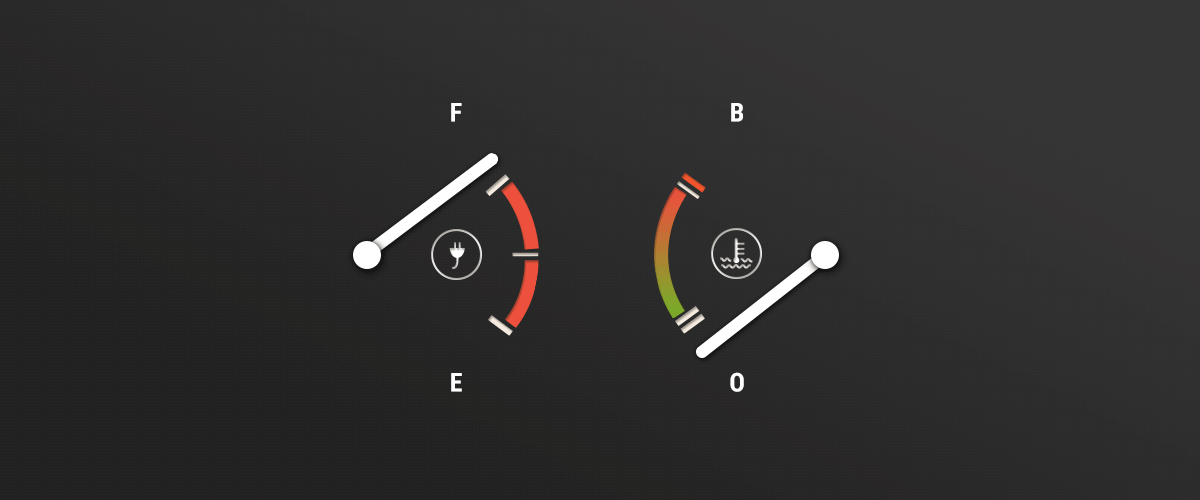Help! The heater does not work as it should! What to do?
Here is help for you.
PROBLEM: Water in the connection housing
Possible causes:
Cold-warm changes cause condensation water to collect in the connection housing (outdoor installation). Water in the connection housing mainly in the form of the small drops. Larger quantities collect on the bottom.
What to do?
Provide a heater for the switchgear cabinet or install a pressure compensation element.
PROBLEM: Liquid in the connection housing
Possible causes:
The heat bars leak. The liquid in the housing is the heated medium. Wear tracks can be identified on the connection side of the flange plate. Liquid may run on the feeder to the heating bar from a connecting terminal.
What to do?
Switch it off immediately. Depressurize the system and replace the heating element as soon as possible. The fault can not be identified until the removal.
PROBLEM: Heating elements give a cracking sound
Possible causes:
The noise is not a fault but will always occur during the first heating-up process. It will vanish during operation.
What to do?
Nothing
PROBLEM: The temperature is not reached (1)
Possible causes:
Supply voltage too low
What to do?
First of all, measure the correct supply voltage. It must comply with the specifications on the nameplate. 10% less supply voltage means 20% less power!
PROBLEM: The temperature is not reached (2)
Possible causes:
Heating elements are defective
What to do?
If the fault occurs after some time of operation, check first whether the heating elements are o.k. For example, use a clip-on ammeter to measure the power consumption of all stages in an activated condition or measure the electrical resistance in a deactivated condition.
Setpoints:
Current = Power / Voltage / 1.73
Resistance (between the phases) = 2 * Voltage * Voltage / Power
PROBLEM: The temperature is not reached (3)
Possible causes:
The heat requirement is higher than planned (e.g. summer - winter)
What to do?
If the power consumption of the heating element is o.k., the heat requirement is obviously higher than the heating element can generate. Change the operating point (lower flow) or install a more powerful heating element
PROBLEM: Heating element fails to heat (1)
Possible causes:
Temperature limiter tripped
What to do?
If the fluid temperature is significantly below the temperature as set on the limiter, it may be reset by pressing the release button. If the tripped limiter cannot be reset even if the system is cold (room temperature), there will be a mechanical fault; replace the limiter with a part of the same type.
PROBLEM: Heating element fails to heat (2)
Possible causes:
Ambient temperature too low
What to do?
Due to their type the capillary thermostats are not deactivated at temperatures below approx. -10°C. If these temperatures (environment!) can occur, other temperature switches must be used for the anti-freeze heaters (e.g. PT100 with evaluation electronics).
PROBLEM: Electronic temperature controller displays 1999 (flashes)
Possible causes:
Sensor break in the sensor line or polarity of connections reversed.
What to do?
Reversed polarity of the connections. In case of PT100 sensors check first whether they are properly protected. If necessary, reverse the two outer connections. The PT 100 control resistance is approx. 110 ohms at 20 °C. In case of three-wire sensors the same colours identify the same "end" of the sensor.
PROBLEM: Control quality bad
Possible causes:
Badly adapted control sstem (e.g. sensor position and/or control parameters)
What to do?
Perform a self-optimization for electronic controllers during commissioning. The controller will then determine the optimized control parameters independently. In case of mechanical controllers an external control loop must be used for optimization, if necessary. Please note: Both the sensor and the heater have a certain inertia which may be within the range of minutes, especially within the heater. A satisfactory control quality can only be achieved in stationary operation in most cases. In particular, quick changes of the operating point can only be corrected satisfactorily at high expenditures (control and process equipment) due to the inertia.
PROBLEM: Thermostat schaltet scheinbar fehlerhaft
Possible causes:
Current through the contacts too low
What to do?
If, for example, a thermostat is wired to a PLC input, the current flowing through the contacts is normally too low, not cleaning the oxide layer of the contacts and seemingly causing the thermostat to be deactivated. We recommend a current of at least 100mA + through the contact. An auxiliary relay must be used for an evaluation by a PLC.

